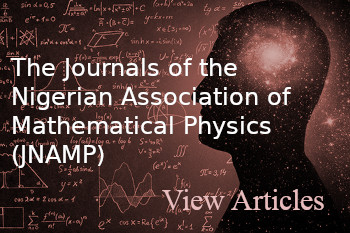FINANCIAL DEVELOPMENT AND ECONOMIC GROWTH: GRANGER CAUSALITY FOR NIGERIA
Keywords:
Indicator, Growth, GDP, Economic, Development, CausalityAbstract
This paper examines the causal relationship between Financial Development and Economic Growth in Nigeria for the period of 1981-2016; include financial indicators and examine their effects on economic growth provided by real GDP. The study used Augmented Dickey Fuller (ADF) test to examine the stationary status of the series. Moreover, Granger Causality and Johansen co-integration test were employed to check the direction of causality and relationship between financial development and Economic Growth. The result indicates that all series were stationary after the second difference I(2); however, there exist a stable relationship between financial development and economic growth. Furthermore, there is significant pass through between financial deepening to economic. This implies that during the period of study financial development stir up economic growth. The study reveal that money supply contribute significantly to economic growth in Nigeria and Finally, credits to private sectors make little contribution to economic growth in Nigeria.
Downloads
References
King, R.G. and R. Levine (1993), “Finance and Growth: Schumpeter Might Be Right”, Quarterly Journal of Economics, Vol. 108,
pp. 717-738.
Deidda and Fattou (2001): Non linearity between finance and growth
King, R.G. and R. Levine. (1993b). “Finance and growth: Schumpeter might be right”. Quarterly Journal of Economics, 108 (3):
-38
Harrison, P., Sussman, O., & Zeira, J. (1999). Finance and growth: Theory and new evidence. In Federal Reserve Board Discussion
Paper.
Luintel, K.B. and Moshaid Khan (1999). “A Quantitative Reassessment of the Finance- Growth Nexus: Evidence from a multivariate VAR. Journal of Development Economics; Vol. 60 391 -405
Schumpeter, Joseph (1912). The Theory of Economic Development, Cambridge, Mass,:Harvard University Press.
Adelakun Odeniran and Udeaja (2010): Financial Sector Development and Economic Growth: Empirical Evidence from Nigeria Central Bank of Nigeria Economic and Financial Review Volume 48/3
Balogun, E. D. (2007). Banking sector reforms and the Nigerian economy: Performance, pitfalls and policy options. In Munich
Personal RePEc Archive MPRA Paper (3084). University of Munich, Germany.
Ayadi, Arbak, Ben-Naceur and De Groen, (2013): Financial Development, Bank Efficiency and Economic Growth across the
Mediterranean, MEDPRO (Mediterranean Prospects)
Johansen, Soren and K. Juselius (1990), Maximum likelihood estimation and Inferences on Cointegration with application to the
demand for money. Oxford Bulletin of Economics and Statistics, 52,169-210
Komolafe, O.S. (1996), “Co-integration Theory: Technique and Application”. In Obadan, M.I.and M.A. Iyoha, (eds.), Macroeconomic Policy Analysis: Tools, Techniques and Application. National center for Economic Management and Administration (NCEMA
Downloads
Published
Issue
Section
License
Copyright (c) 2024 The Transactions of the Nigerian Association of Mathematical Physics

This work is licensed under a Creative Commons Attribution-NonCommercial-ShareAlike 4.0 International License.




